It's crucial to know that students with autism and ADHD need special study strategies. Autism…
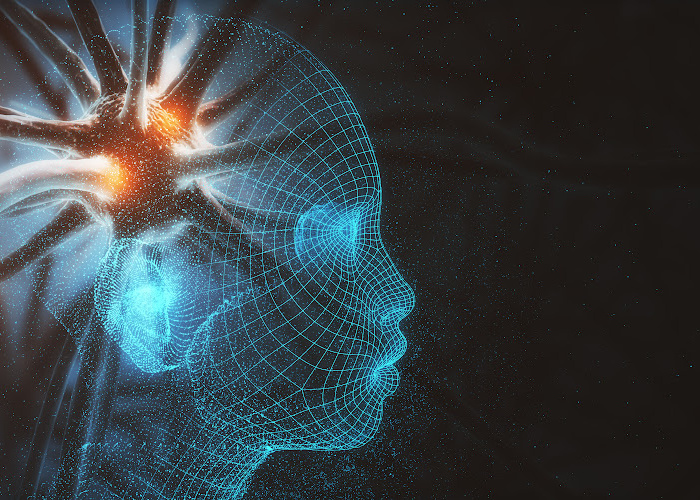
Understanding TMS Therapy for Autism and Its Potential Benefits
Think of a symphony orchestra, where each musician plays their instrument in harmony, creating beautiful music. Now, imagine if one section of the orchestra was out of sync, disrupting the harmony and changing the music’s nature. ,
This is a metaphor for Autism Spectrum Disorder (ASD), a complex neurodevelopmental disorder where certain brain areas may not function in harmony. But what if we could bring that harmony back?
Enter Transcranial Magnetic Stimulation (TMS), a noninvasive therapy that uses magnetic fields to stimulate nerve cells in specific brain regions, which has shown promising potential in treating ASD.
So, what is TMS autism treatment, and how does it work?
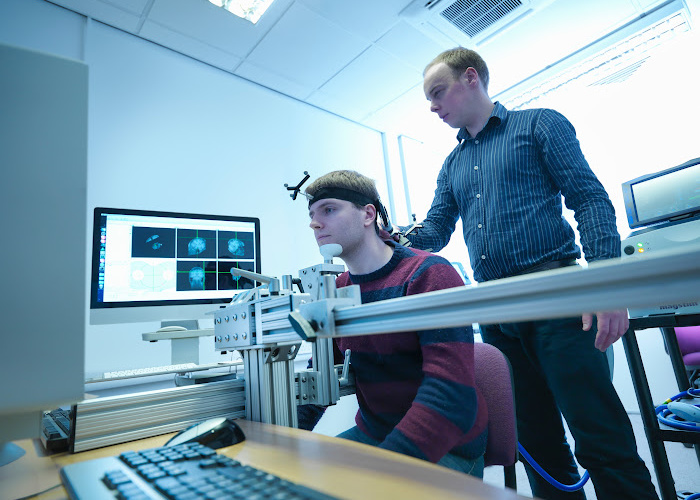
Understanding TMS and Its Connection to Autism
Autism, or autism spectrum disorder, is akin to a unique composition of music, with its individual melody and rhythm. It’s characterized by impairments in communication, social interactions, and behavior. Yet, the melody of autism varies greatly from person to person, with each individual displaying a unique set of symptoms or indicators.
This makes the treatment of spectrum disorder, particularly autism spectrum disorders, challenging. Over the years, several therapies have emerged, but one that has been gaining attention in autism research is Transcranial Magnetic Stimulation (TMS).
TMS is a noninvasive brain stimulation therapy that uses magnetic fields to activate nerve cells in specific brain regions. It’s like tuning a musical instrument, aiming to bring the disrupted harmony in the brain back to its rhythm. The therapy has been used to treat conditions like Obsessive Compulsive Disorder (OCD) and Major Depressive Disorder (MDD), and now it’s being studied for its potential to treat ASD.
Although TMS presents a promising outlook, we must remember that it’s still in the adjustment phase. Comprehensive studies are required to assess TMS’s effectiveness and long-term impact on ASD treatment. Early intervention is important, as it yields more positive outcomes for people with autism in the long term. But as with any new therapy, TMS for autism is not without its challenges and limitations.
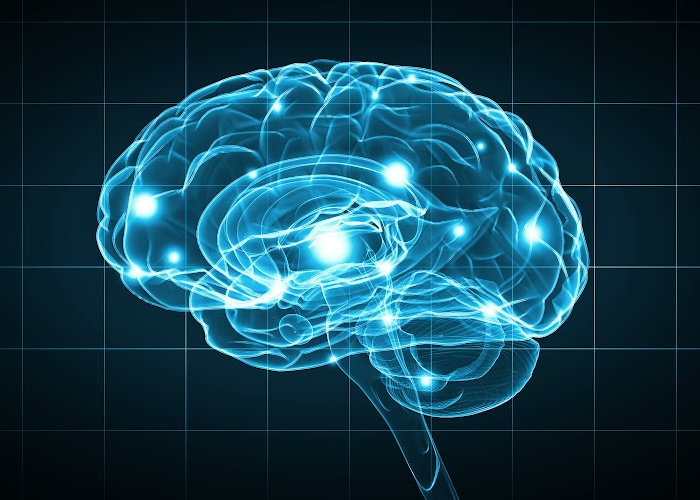
Transcranial Magnetic Stimulation: An Overview
Imagine if you could tweak the brain, much like tuning a piano, to help it function better. TMS does just that. It’s a noninvasive therapy that utilizes magnetic fields to stimulate nerve cells in targeted brain regions.
It’s like a conductor directing the orchestra, ensuring each section plays in perfect harmony. This can potentially induce gamma frequency oscillations, which may play a crucial role in treating ASD.
The TMS journey started in 1985 when Dr. Anthony Barker and his team formulated the first device for administering TMS, marking the beginning of this therapeutic intervention. Since then, TMS has been used to treat a range of conditions, including:
- Depression
- OCD
- Post-Traumatic Stress Disorder (PTSD)
- Movement disorders like Parkinson’s disease and dystonia.
The functional mechanism of TMS employs magnetic fields to generate tiny electric currents in the brain, triggering the release of neurotransmitters like serotonin and dopamine. This could be likened to a soft push to the brain cells, urging them to operate more effectively.
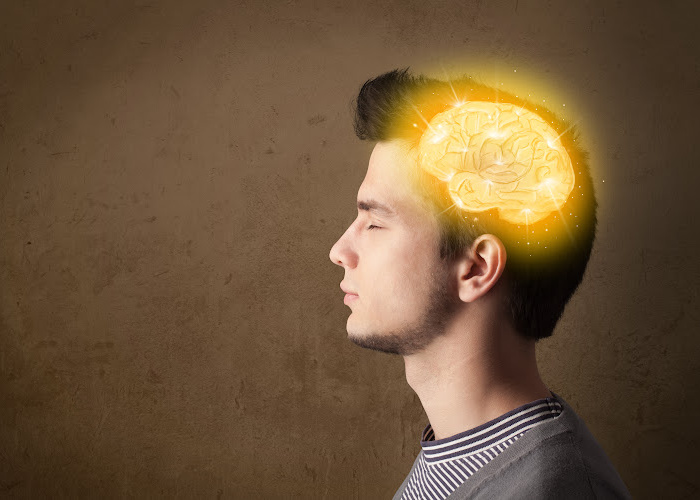
The Link Between TMS and Autism
Like any therapy, one might wonder how it applies to autism. The role of TMS appears promising in the realm of ASD. Research suggests that TMS therapy might be advantageous for individuals with ASD, particularly in addressing social and language deficiencies. It’s like teaching a musician to play a challenging piece, improving their performance over time.
TMS may potentially assist in restoring chemical imbalances in the brain, leading to enhanced social and language abilities. This can be likened to fine-tuning an instrument, enhancing its sound quality. Another promising protocol that combines TMS with other approaches is Magnetic e-Resonance Therapy (MeRT), which provides a tailored treatment based on the individual’s unique brain pattern.
However, like any emerging therapy, possible side effects and risks must be taken into account. Patients may experience headaches, scalp discomfort, and fatigue as common side effects. Before starting TMS therapy, certain factors like age, medical history, and medications should be taken into account. It’s like ensuring a musician is in good health before a performance, ensuring they can give their best.

The Science Behind TMS for Autism
Now that we have a grasp on TMS and its relation to autism, let’s examine its underlying science more closely. The scientific basis for the efficacy of TMS in treating Autism is that it can modulate the neural activity in brain regions associated with ASD.
TMS delivers magnetic pulses to the brain, which can help regulate abnormal brain activity and improve symptoms of Autism. It’s like a maestro conducting an orchestra, bringing harmony to a previously discordant performance.
Recent clinical trials have studied the efficiency of TMS in treating Autism. These trials act as music critics, evaluating the performance and marking the improvements. These trials have demonstrated promising potential of TMS as a non-invasive treatment for Autism, shedding light on the promising potential of this therapy.
However, similar to any new initiative, TMS therapy for Autism presents its own set of challenges. Scientific research has identified a number of limitations and challenges associated with the use of TMS for Autism, such as:
- Limited attempts to mitigate adverse effects
- Difficulty in accurately targeting the intended brain regions
- The necessity of further research to validate the efficacy and long-term benefits of TMS for treating ASD.

Promising Results from Clinical Trials
Venturing into the sphere of clinical trials, we encounter some encouraging results. Recent studies have shown:
- significant reductions in social and language related autism symptoms
- possible improvements in cognition and imitation as reported by caregivers
- potential for improving core deficits in low-functioning children with ASD.
One particular study featured in Frontiers in Psychiatry disclosed that high-frequency repetitive transcranial magnetic stimulation (HF-rTMS) significantly affected the social and speech deficits in individuals with autism, as gauged by the Autism Treatment Evaluation Checklist (ATEC) and the reports from parents.
Another study in Autism Parenting Magazine reported a significant decrease in social and language related symptoms after children with ASD received TMS treatment. It’s like hearing the sweet sound of progress in a challenging piece.
Caregivers have also reported potential improvements in the following areas following TMS therapy:
- Cognition
- Imitation
- Language imitation
- Behavior
It’s like seeing a musician slowly master a challenging piece, showing signs of improvement over time.
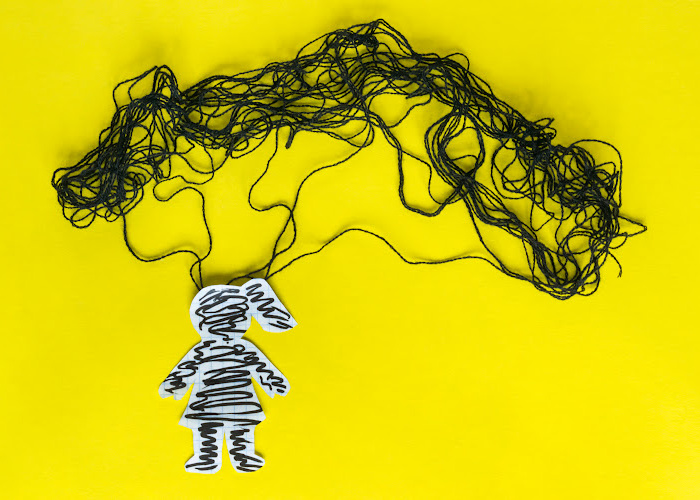
Challenges and Limitations
However, the process of TMS therapy for Autism presents its own set of challenges. The primary impediments to extensive TMS autism studies include constraints in study design, such as insufficient attempts to reduce bias and blinding, as well as the requirement for extensive clinical cohort studies involving the same population.
It’s like perfecting a symphony – it requires careful coordination, precise timing, and a lot of practice.
Studies have shown that individuals with ASD display a high degree of variability in their resting-state networks. However, a three-week rTMS treatment has been found to mitigate these hyper fluctuations. Furthermore, TMS treatment has been documented to enhance eye-gaze behavior, reduce irritability and repetitive behavior, and augment ERP components associated with target processing in autistic patients.
While some individuals might witness positive effects from TMS therapy, others may not exhibit considerable improvement. It’s like a challenging piece of music – while some musicians may master it quickly, others may take longer or struggle to play it. This highlights the need for further research to gain a comprehensive understanding of the effectiveness of TMS therapy for individuals with autism.

How TMS Therapy Works for Autism
Just as a conductor leads an orchestra to ensure each section plays in harmony, TMS therapy for autism similarly aims to guide the brain towards harmonious functioning. TMS therapy for autism involves targeting the prefrontal cortex with repetitive magnetic pulses to induce gamma oscillations, thereby potentially improving communication and sleep.
The therapy can be compared to a gentle prod to the brain cells, urging them to function more efficiently. Brain cells release neurotransmitters such as serotonin and dopamine when the currents are activated during TMS therapy for autism. It’s like coaxing a shy musician to play their part, helping the entire orchestra to create beautiful music.
But how do we know where to target in the brain? That’s where the motor threshold comes in. The motor threshold refers to the level of magnetic energy required to elicit a twitching response in the fingers or hands. It’s like the conductor’s baton, guiding the orchestra to create the perfect symphony.

Targeting the Prefrontal Cortex
The prefrontal cortex holds a significant role in TMS therapy for autism, akin to a conductor in an orchestra. It’s targeted with low-frequency TMS in TMS therapy for autism to modulate brain functioning and improve behavioral symptoms. Research has indicated that TMS over the dorsolateral prefrontal cortex can reduce gamma activity and enhance executive function in autism.
The prefrontal cortex, including the medial prefrontal cortex, is the maestro of the brain. It governs behavior, personality, and executive functions like decision-making, problem-solving, planning, and social interactions. It’s the conductor who guides the orchestra, ensuring every musician plays their part in harmony.
TMS over the prefrontal cortex increases activity in the cortex directly beneath the stimulation, which can influence working memory, reasoning, and executive tasks. It’s like a conductor guiding the orchestra, ensuring each section plays in perfect harmony.
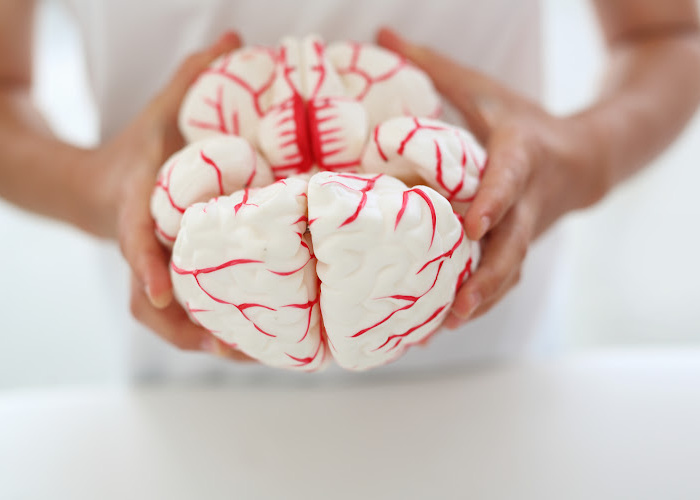
Repetitive TMS and Induced Gamma Oscillations
Gamma oscillations in the brain can be compared to the rhythm section of an orchestra, setting the pace and connecting all the sections. Repetitive TMS can modulate these gamma oscillatory activities and affect the power of gamma activity in the brain, potentially treating certain dimensions of ASD, including repetitive behaviors.
Gamma oscillations refer to rhythmic fluctuations in electrical activity that occur at a frequency range of approximately 25-100 Hz. They’re involved in many cognitive processes and neuronal synchronization, much like the rhythm section in an orchestra keeping time and maintaining the beat.
So how does repetitive TMS induce these induced gamma frequency oscillations? It enhances the system’s sensitivity and alters the waveform of gamma oscillations. It’s like a conductor subtly influencing the rhythm section, subtly changing the tempo without disrupting the harmony of the orchestra.
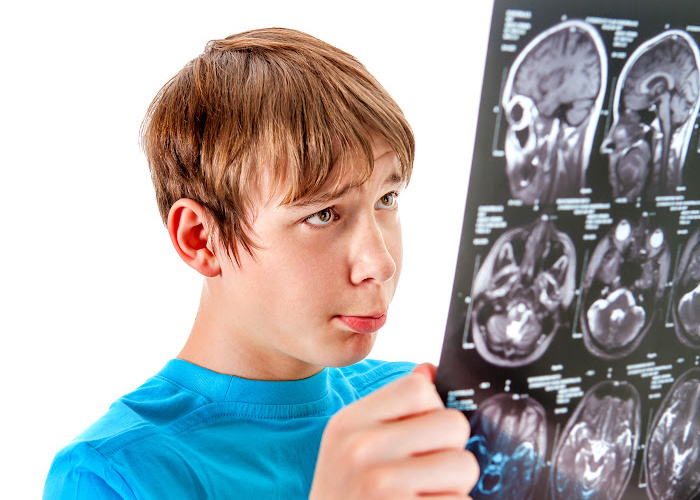
TMS Treatment Process and Duration
Just as every symphony has a beginning, middle, and end, so does TMS therapy for autism. The treatment involves targeting the prefrontal cortex with repetitive magnetic pulses to induce gamma oscillations, potentially improving communication and sleep. It’s recommended to have 30 sessions over a period of six weeks, each session lasting between 30-40 minutes.
TMS therapy for autism requires commitment, like rehearsing for a concert. Treatment may not show any impact for several weeks. This could be the case for a few individuals. However, with patience and perseverance, the sweet sound of improvement is usually heard within two to four weeks of the treatment beginning.

Session Structure and Duration
A typical TMS session for autism lasts between 15-30 minutes, much like a music practice session. In each session, high-frequency stimulation is employed to increase excitatory activity in the brain. It’s like a musician practicing scales and arpeggios, gradually improving their technique and performance.
The initial TMS treatment for autism generally takes approximately sixty minutes, akin to the first rehearsal for a concert where everything is new and takes a bit longer. The follow-up TMS sessions for autism treatment typically last for approximately 15 to 45 minutes, much like regular practice sessions where musicians refine their skills and perfect their performance.
Recommended Number of Sessions
For TMS therapy for autism, it’s generally recommended to plan for 30 sessions over a six-week period, with each session lasting between 30 and 40 minutes. It’s like rehearsing for a concert – practice makes perfect.
The progress in TMS therapy is often gradual, much like mastering a musical instrument. Generally, patients may experience improvement within two to four weeks of beginning treatment.
However, the effect of TMS therapy varies for each individual, like how different musicians react differently to the same piece of music. Some may see improvements quickly, while others may require a more extended period. This is why it’s important to have a recommended number of sessions to ensure each individual gets the most out of the therapy.

Potential Side Effects and Risks of TMS for Autism
Much like playing a complex piece of music, TMS therapy for autism can pose certain challenges. It has potential side effects and risks that need to be taken into account.
Subgroup analyses revealed no substantial disparities in the occurrence rates of adverse events between groups based on the purpose of using TMS, average age of participants, whether the stimulation site was DLPFC, intensity of TMS, and the number of stimulation sessions. It’s like playing a piece of music – no matter the instrument, the tempo, or the musician, the melody remains the same.
The pooled prevalence with 95% CI of headache, a common side effect, was determined to be 10%. It’s like the minor discomfort a musician might feel after a long rehearsal. But, as with any discomfort, it’s important to understand and manage it effectively.
While TMS may be linked with some adverse effects, it should be noted that the safety and effectiveness of TMS therapy is still under investigation. It’s like the early stages of learning a new piece of music – there might be some wrong notes and tempo changes, but with more practice, the music starts to flow.

Common Side Effects
Just as a demanding musical piece can cause some discomfort to a musician, TMS therapy for autism can cause the following side effects:
- Mild headaches or discomfort at the site of stimulation
- Fatigue
- Nausea
- Dizziness
- Anxiety
These side effects are typically of short duration and diminish with further sessions, much like a musician getting used to a challenging composition.
In a study conducted by Yang et al., caregivers were queried to assess the adverse effects before and after each TMS session. It’s like asking a musician how they felt after a difficult rehearsal. By understanding and managing these side effects, the therapy can be made more comfortable and effective.
When providing TMS therapy for autism, side effects are generally managed through a range of strategies.
These may include:
- Altering the intensity or frequency of the sessions
- Offering supportive care and counseling to address any emotional or psychological effects
- Carefully monitoring the individual’s response to the treatment
It’s like a music teacher adjusting the pace of a lesson to suit the student’s comfort and maximize their learning.
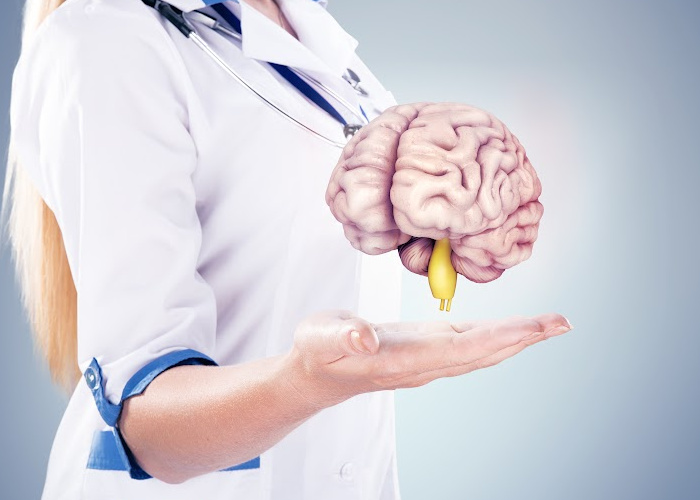
Factors to Consider Before Starting TMS Therapy
Before a musician begins learning a new piece, various factors such as their skill level, the piece’s difficulty, and the time commitment must be considered. Similarly, before initiating TMS therapy for autism, the following factors should be considered:
- The potential discomfort level
- Sensory implications of the therapy
- The need for further research on TMS’s application and potential side effects, especially for children on the autism spectrum.
The cost of TMS therapy for Autism can vary, much like the price of a musical instrument depends on its quality and brand. It typically ranges from $3,000 to $16,000 for a full course of treatment, depending on the individual case. This is something families need to consider before embarking on the TMS journey.
To prepare a child with Autism for TMS therapy, the following steps are essential:
- Conduct exhaustive diagnostic testing to assess the child’s needs.
- Tailor the treatment protocol based on the child’s individual requirements.
- Consult with professionals who specialize in TMS therapy to treat autism, ensuring the safety and efficacy of the treatment.
This process is similar to a music teacher assessing a student’s abilities and customizing the lessons to suit their level.
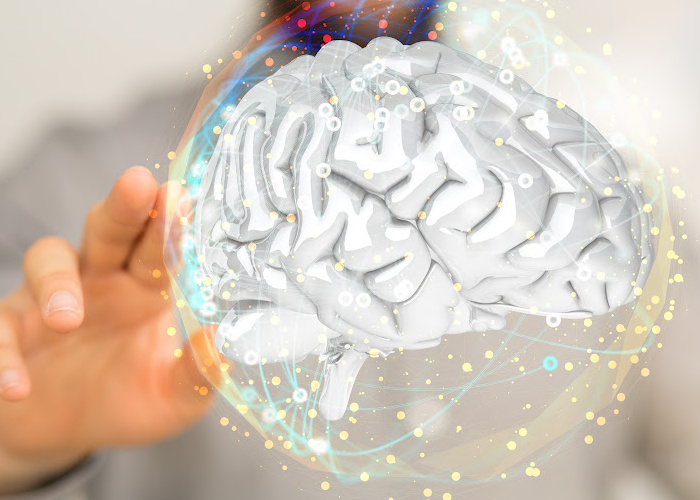
Real-Life Experiences with TMS for Autism
Every musician has a unique journey, a personal story of triumphs and challenges. Similarly, individuals with autism who have undergone TMS therapy have their unique stories to tell. Personal experiences reported include:
- Gaining emotional empathy
- Establishing connections
- Understanding emotions
- The treatment procurement process involving paperwork and coordination with therapists
These experiences have been shared by notable individuals such as John Elder Robison, author of ‘Switched On,’ and discussed in various online forums.
There are documented case studies demonstrating the effect of TMS therapy on individuals with autism. Some studies suggest that TMS may be a promising tool for the study and potential treatment of ASD.
However, the prevalence of reported adverse effects of TMS among individuals with ASD is 25%. It’s like a concert review, highlighting the highs and lows of a performance, providing valuable insights for future improvements.
Research suggests that TMS therapy may be beneficial in treating certain symptoms associated with ASD, such as social and cognitive abilities. It offers a non-invasive and safe approach to treating autism. While further research is necessary, TMS therapy has shown potential in improving the daily life of individuals with autism.
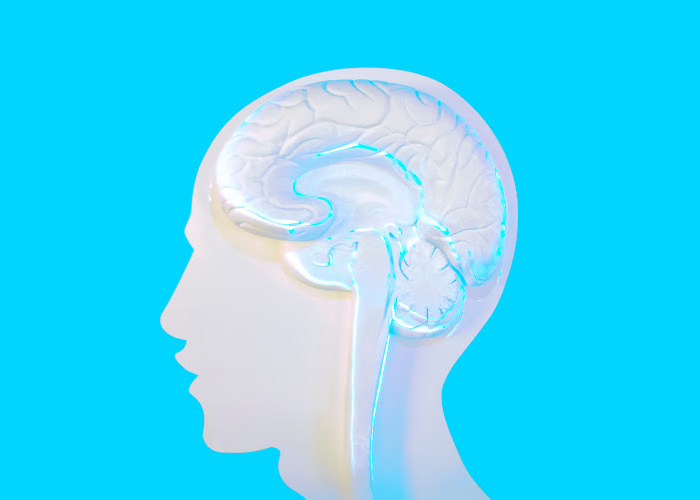
Future Directions in TMS Autism Research
As in music, there’s always room for growth and innovation in TMS therapy for autism. While studies have hinted at potential advancements for TMS technology in treating autism, the results remain inconclusive. It’s like an unfinished symphony, with more to be written and discovered.
Currently, several research projects are underway to study the impact of repetitive transcranial magnetic stimulation (rTMS) on individuals with autism. These studies are looking at the potential of rTMS to improve eye-gaze behavior and reduce autism-related symptoms, as well as the brain’s response to language and sound. These investigations are like explorations of new musical styles, with each study adding another note to the symphony of understanding ASD.
Indeed, new methodologies are emerging in TMS therapy for Autism. Researchers are investigating individualized approaches to TMS for the treatment of Autism. This approach seeks to customize the TMS treatment to the particular needs of each individual with Autism. It’s like a musician composing their own music, tailored to their unique style and preferences.

Final Thoughts
In this symphony of understanding TMS therapy for autism, we’ve explored the science, the process, the experiences, and future directions of this potential therapy.
We’ve learned that TMS, like a skilled conductor, can potentially direct the brain’s orchestra, bringing harmony to the discordant parts. However, as with any new piece of music, it requires practice, research, and refinement.
As we continue to fine-tune this therapy, we hope to provide a better quality of life for those with ASD, enabling them to play their unique melody in the orchestra of life.
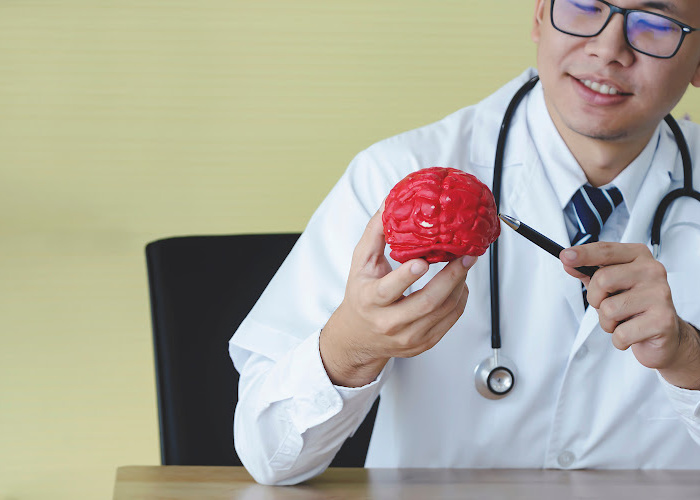
Frequently Asked Questions
Got Questions about TMS treatment? Read our FAQ below.
What is the most effective treatment for autism?
Behavioral Therapy Applied Behavioral Analysis (ABA) and related therapies are generally the most effective treatment for autism, with many districts providing ABA classrooms or therapists as part of disability programs.
Is TMS FDA approved for autism?
TMS has FDA approval for adults with major depressive disorder and OCD, however its use for autism is considered off-label.
What is Transcranial Magnetic Stimulation (TMS)?
Transcranial Magnetic Stimulation (TMS) is a noninvasive therapy which uses magnetic fields to stimulate nerve cells in specific regions of the brain. It has been studied for its potential to induce gamma frequency oscillations, which may help treat Autism Spectrum Disorder (ASD).
How does TMS therapy work for Autism?
TMS therapy for autism targets the prefrontal cortex with repetitive magnetic pulses to induce gamma oscillations, potentially improving communication and sleep.
What are the potential side effects of TMS therapy for Autism?
TMS therapy for Autism may cause mild headaches, discomfort at the site of stimulation, fatigue, nausea, dizziness, and anxiety.



This Post Has 0 Comments